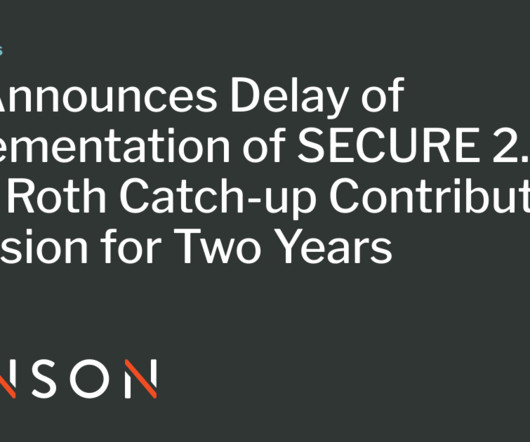Catch Back Up on the SECURE 2.0 Increased Catch-Up Limits for 2025
Snell & Wilmer Benefits
MAY 31, 2024
s increased catch-up contribution limits set to take effect next year, it’s time for 401(k) plan sponsors to brush up on the rules and consider how to administer the changes. Under the current rules, 401(k) plans may allow participants to make catch-up contributions when they are age 50 or older. With SECURE 2.0’s












Let's personalize your content